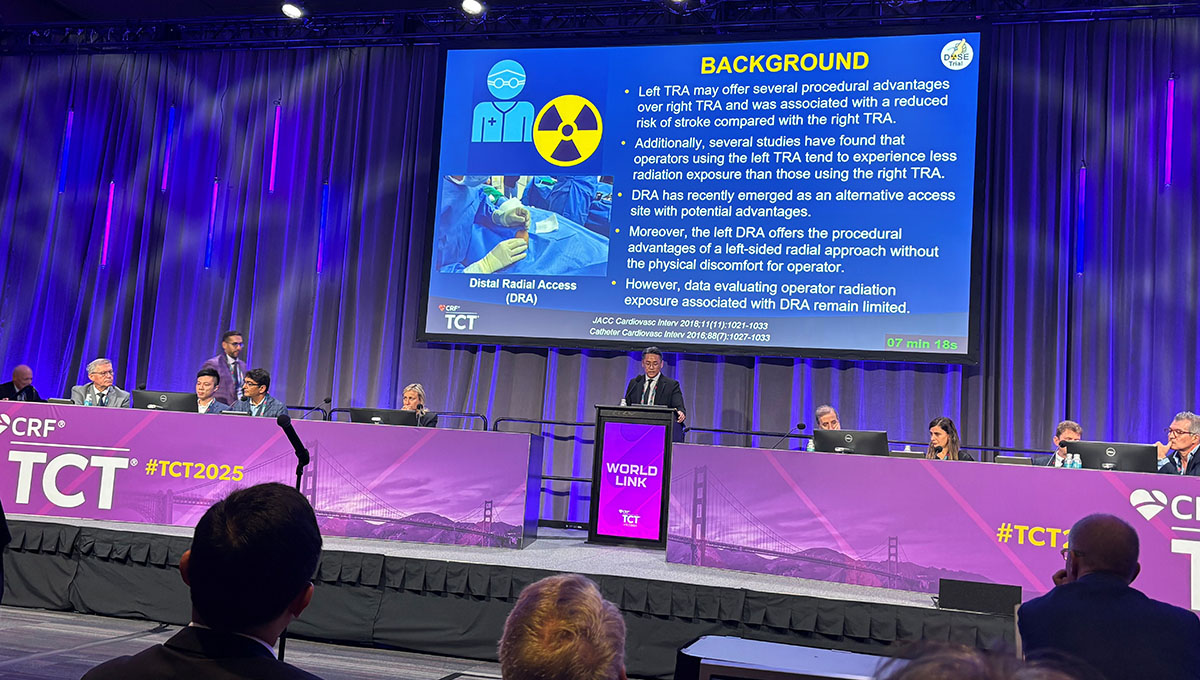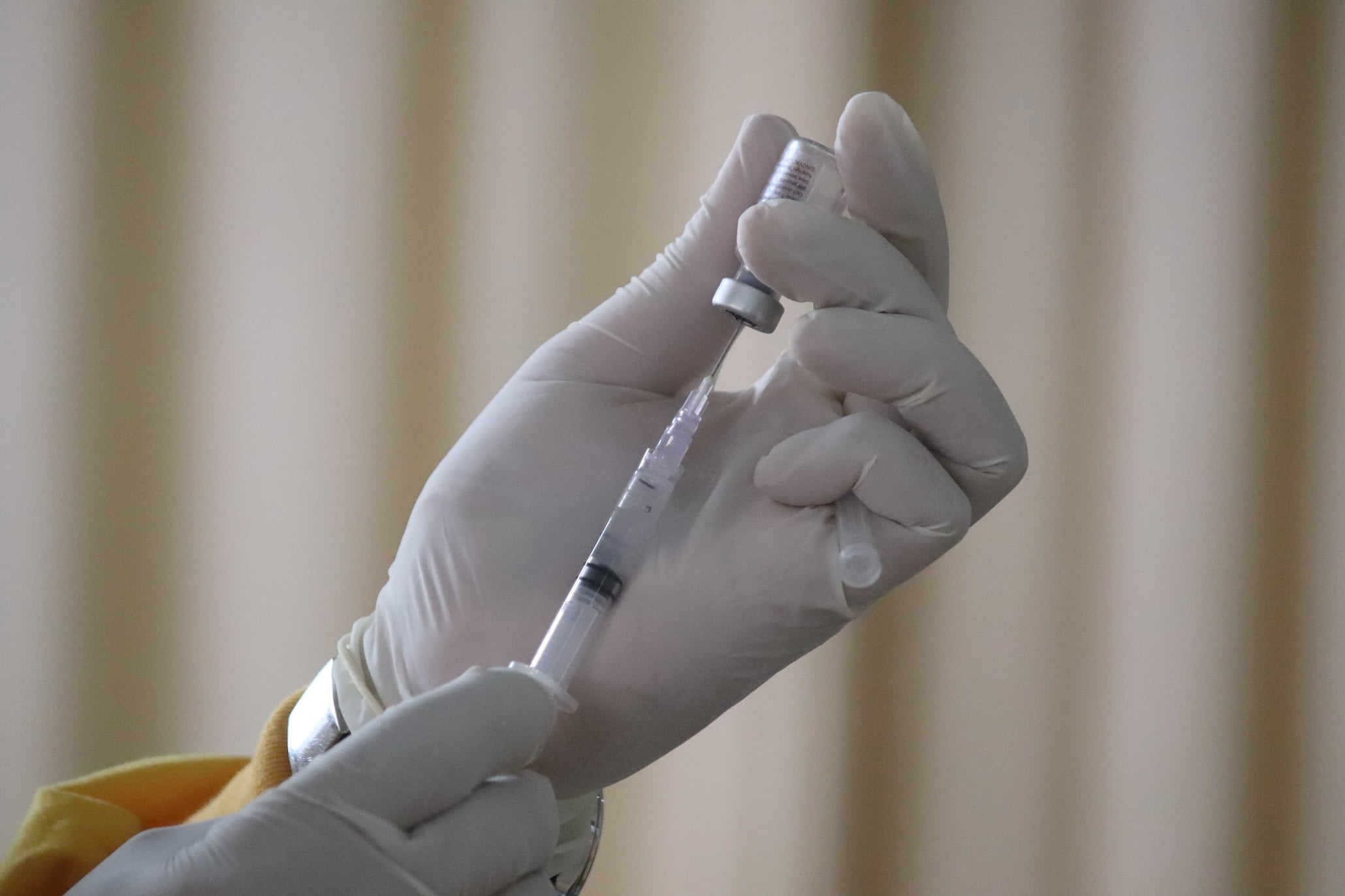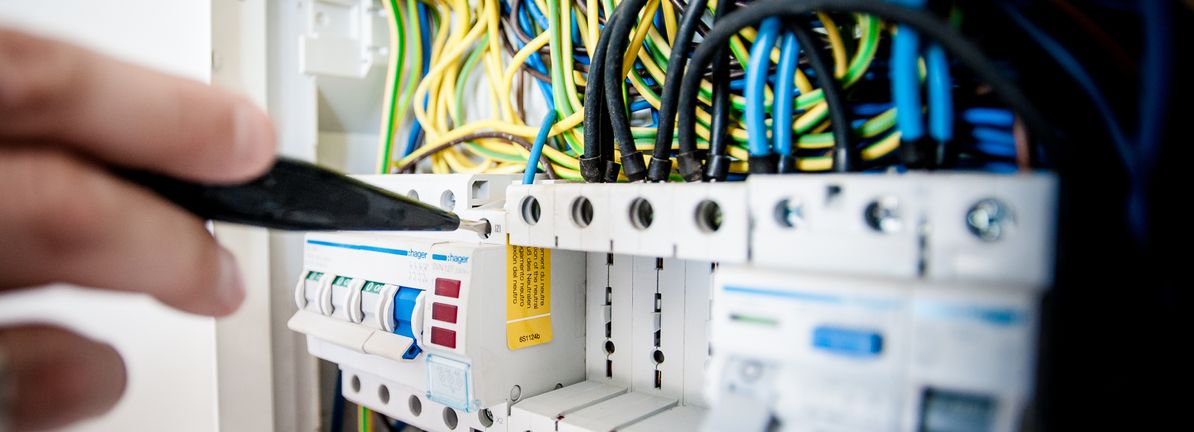Researchers hoped the technique might involve lower exposure compared with right transradial access, but this didn’t pan out.
SAN FRANCISCO, CA—Operators are exposed to equal amounts of radiation during coronary procedures whether they use left distal radial access (DRA) or right transradial access (TRA), according to new data from the randomized, multicenter DOSE trial.
Yongcheol Kim, MD, PhD (Yongin Severance Hospital, Republic of Korea), who presented the data during the TCT WorldLink Forum today, said left DRA “has recently emerged as an alternative access site” that, among other things, offers operators less physical discomfort. It also involves less subclavian tortuosity plus catheter techniques that are more akin to the transfemoral approach.
Unfortunately, as in the group’s previous DRAMI trial comparing access routes in STEMI patients, the hoped-for radiation benefits with left DRA did not pan out.
James Goldstein, MD (Millennium Cardiology, Royal Oak, MI), the discussant following Kim’s presentation, summed up the data by saying: “I love it when trials make sense.” In DOSE, “the manner in which the left and right wrists were ultimately positioned [was] pretty much the same spot on the groin, so there’s no a priori reason to think there would be much difference in radiation exposure based on the position and the access,” he commented.
Led by Oh-Hyun Lee, MD, and Ji Woong Roh, MD, PhD (both from Yongin Severance Hospital), the study, which was simultaneously published in JACC: Cardiovascular Interventions, is the first large, randomized trial to evaluate the potential for left DRA to limit how much radiation operators receive during these procedures.
Prior studies had suggested that “operators using the left TRA tend to experience less radiation exposure than those using the right TRA,” according to Kim.
“Coronary angiography and PCI are essential procedures in the diagnosis and treatment of coronary artery disease, often performed thousands of times over an interventional cardiologist’s career,” the researchers note in their paper, adding that the radiation exposure to operators that accompanies such cases can, over a lifetime, pose substantial health risks.
The DOSE Trial
The DOSE investigators randomized 1,010 patients scheduled to undergo coronary procedures by either left DRA or right TRA at three centers in the Republic of Korea. They used a set of three real-time dosimeters to measure radiation exposure for five experienced operators at the left wrist, as well as at the left side of the head outside the lead cap and the left chest pocket of the lead vest. All wore the same radiation protection gear, including lead skirt and vests, thyroid collars, leaded glasses, leaded caps, and shields mounted on the table and ceiling.
With left DRA, patients’ left hands were positioned in the same place as where the left femoral artery puncture site would be, whereas with right TRA, patients’ right arms were positioned close to the right side of their bodies.
The left DRA group had a lower proportion of male patients and was more likely to undergo ultrasound-guided puncture. PCI, done in a quarter of the participants, trended higher with left DRA but didn’t reach statistical significance. All other baseline characteristics were similar in the two groups.
However, radiation levels were similar at each location no matter which access route was used.
Median Radiation Exposure (μSv) to Operators by Access Route
|
|
Left DRA |
Right TRA |
P Value |
|
Left Wrist |
4.76 |
5.20 |
0.342 |
|
Head |
2.00 |
1.83 |
0.416 |
|
Chest |
1.28 |
1.07 |
0.199 |
There were no advantages to either approach for the secondary endpoints of access-site crossover, fluoroscopy time, procedure time, and contrast volume, and no differences across patient subgroups.
Overall, though, the study reassures “that radiation hazard should not be considered a limiting factor for the adoption of left DRA in routine clinical practice,” the researchers conclude.
Goldstein added that both access routes were “successful, with equivalent levels of procedural performance,” however.
Going forward, as radiation protective gear grows more sophisticated and more widely used, these issues may have less relevance, he suggested. The benefits of the newer products go beyond lower exposure to radiation. Also important, Goldstein said, is “getting the lead off and avoiding the orthopedic complications” associated with traditional protective clothing.

![What you get with Google AI Pro and AI Ultra [October 2025]](https://afnnews.qaasid.com/wp-content/uploads/2025/10/1761433330_Google-One-AI-plans.jpg)




